Much has been said about the potential for virtual reality to be an ‘empathy machine’, to grant understanding of situations and emotions that might be hard to realize in other mediums. The non-profit Prevent Human Trafficking is using 360 videos and VR to help people understand the very real problem of human trafficking today.
We spoke to Chris Kiritz, founder of Prevent Human Trafficking, about her organization’s mission and how VR will help to accomplish it.

Let’s start by talking about your background, your professional path and the founding of Prevent Human Trafficking.
My professional path really began with my upbringing in South and Southeast Asia, where I was born and raised in a cult in the region. I encountered exploited children daily and it instilled a strong desire in me to prevent human suffering.
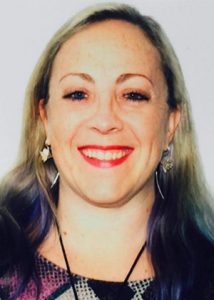
Chris Kiritz of Prevent Human Trafficking
As well as being passionate about social justice, I am a futurist and tech enthusiast. In 2000, using a grant from the Rockefeller Foundation, I bought a Sony Handycam and took it to Thailand to capture and document the work of inspiring people involved in anti-trafficking and social entrepreneurship (for example Mechai Viravaidya, most well known as the ‘Condom King’ for his innovative work in family planning – more info on him here). I used that footage to spread awareness and raise funding for his lifesaving work, including revolutionizing the educational system in Thailand (check out his inspiring Foundation.) Here is one of the 360 videos we did of his work, that is now viewable in VR.
I founded Prevent Human Trafficking in 1999 to address this heinous phenomenon. Since then, I have helped individuals, organizations and government agencies tackle the root causes of human trafficking such as lack of education and economic opportunities. My expertise has also contributed to policy and legislative change, including passage of the original Trafficking Victims Protection Act (TVPA) of 2000 (here’s a PDF of the law).
I’ve also taken hundreds of students and young professionals on annual anti-trafficking study tours to Thailand. This is part of our mission to train the next generation of anti-trafficking leaders and enables them to learn about the issues first hand from some of the pioneers of the global movement, (many of whom are our partners) who risk their lives daily on the front lines to prevent human trafficking.
Almost 20 years after you founded the non-profit, how does technology – and specifically VR – help your mission today?
We’ve come a long way since that Sony Handycam! I’ve always been a tech enthusiast, and I’ve ensured Prevent Human Trafficking is at the forefront of using #techforgood since our founding. Technology helps us spread our message, reach new audiences and raise new funding to prevent human trafficking and human suffering. We’ve embraced VR as the most recent and effective vehicle to deliver these powerful stories and, we hope, ultimately change part of the world.
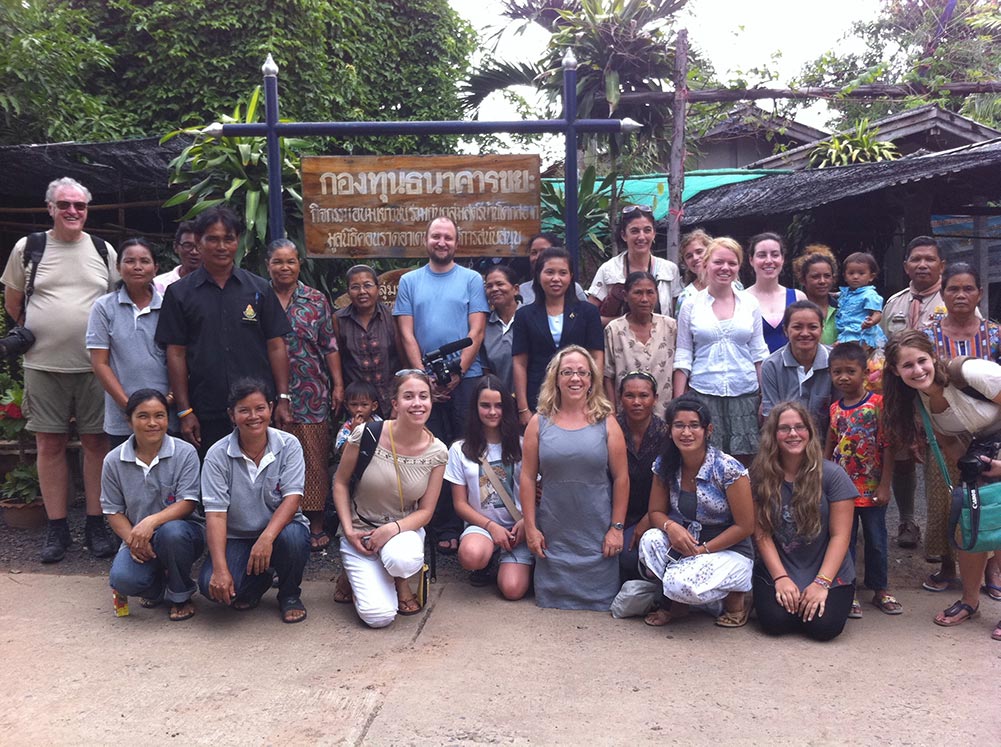
What brought you to using 360 video as a starting point?
I’ve always wanted to bring people into close contact with vulnerable populations because I believe that when people make personal connections, they tend to care about and help them, and that’s key! It’s part of why I run the anti-trafficking study tours. Even in the 1990s I wished there was technology available that could somehow make this happen.
Fast forward to 2010, and I was lucky enough to be accepted into the incredible Interactive Telecommunications Program (ITP) Master’s program at NYU. This was where I found my ‘tribe’ of likeminded people determined to use the magic and power of technology to create positive social change in countless ways. I was inspired by the program’s founder (and lucky me, my Thesis advisor), the legendary Red Burns to do all the things I’d been dreaming of. I went full steam ahead and developed R3 there, which has been adapted and used in Thailand to prevent human trafficking! A good friend and classmate, Jackson Snellings, told me about Samsung’s first 360 camera when it first came out. It was only available in Korea at the time but that didn’t deter me – I bought one and learned how to use it with the help of a couple of dedicated interns. The rest, as they say, is history!
Beyond 360 video, was there a point where you became convinced VR was your path forward?
I’ve attended the SXSW festival for a long time, and have studied people’s reactions to various storytelling mediums, trying to look at how they can be used for awareness of non-profit causes. When I first saw VR content by Chris Milk and others, such as Nothing But Nets (raising awareness of malaria) I was struck by how empowering and impactful it was, on a visceral level. I found I couldn’t “unsee” the content. It also showed common sense solutions that people like me could immediately relate to, and made me feel I could jump in to help in my own small way. What was exciting was that I could anticipate other people reacting similarly, and I have been thrilled to watch this happen with our own original 360 videos and now VR content with the help of a brilliant developer who wishes to remain anonymous.
I was inspired to pioneer the use of this sort of content in the anti-trafficking field, and to tell the empowering, inspiring stories of the children in the care of our partner organizations in Thailand as soon as possible.
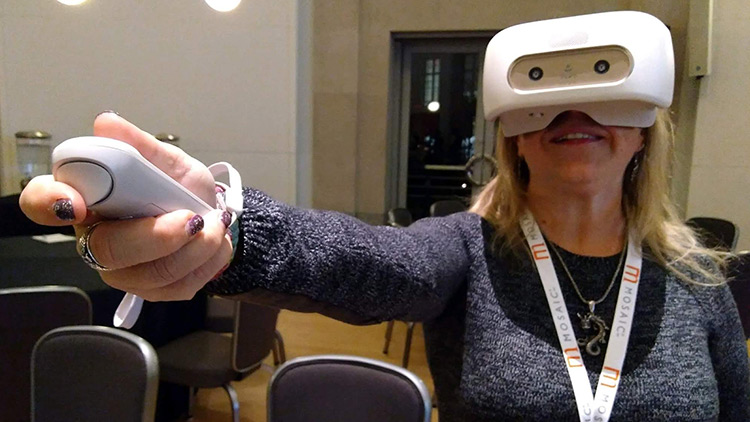
“Setting up my fave headset to date, the magical, super portable standalone, Vive Focus Dev Kit to demo our original content at a conference this year.” – Chris Kiritz. Photo credit: Zohar Rom
I am now convinced from personal experience and from demoing to more than 500 people this year alone that it VR is the best delivery platform for advocates of any issue that they care deeply about. It reaches people on a level not before experienced. It truly leaves a lasting impression that motivates people to want to get involved in being part of the solution!
What did you hope to achieve with 360 video, and now hope to achieve using VR?
Human trafficking is a complex problem that many people find difficult to understand or identify with on a personal level. People may have a rudimentary understanding of the problem, but they wonder, what does it mean? Why does it happen? Who are trafficking victims? How can it be prevented?
We aim to make this impersonal issue a personal one by telling stories to educate and advocate for our mission. We exist to make the invisible visible – and unforgettable – so much so that it spurs people to action! That is the true magic of VR!
When we manage to make this faceless problem a reality for people via 360 video or VR, we are able to effectively demonstrate how everyone can be a part of the solution, whether that means raising funds for shelters and schools, or scholarships, micro credit loans, or creating VR experiences to raise awareness of Slavery at Sea, etc. These are real solutions to real problems that can act as a deterrent, and actually keep populations at highest risk of trafficking safe, and prevent human suffering.
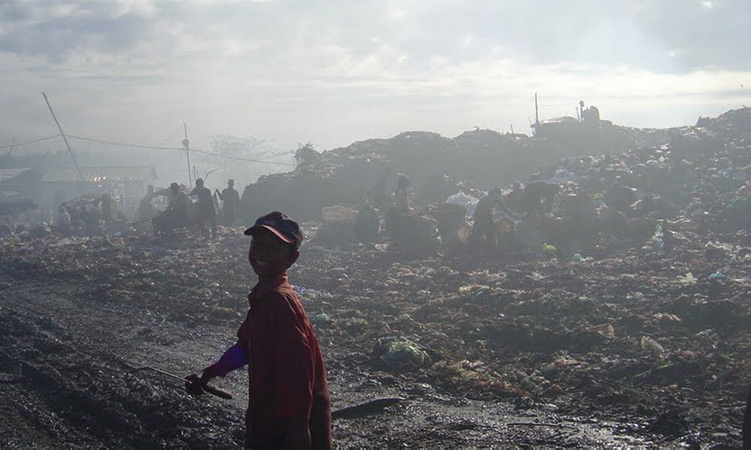
Child working as a ‘waste picker’ in Stung Meanchey, the largest garbage dump in Phnom Penh, Cambodia.
What sort of reactions have you seen to your videos?
We try to immerse people in the worlds of the activists and survivors we serve, by creating a sense of direct connection with the people and environment of south and southeast Asia.
Many longtime supporters and fundraiser attendees commented that using the VR headset, the Vive Focus specifically, was the first time they really ‘got’ the issue of human trafficking on a deep, heartfelt level, after ‘meeting’ some of our partner organizations and the children they work daily to care for.
People are consistently deeply moved – so much so that we have to be sure we have enough lens wipes to clean the headsets of tears, as the videos evoke such an emotional reaction in people who see them. Without VR or these videos, people have told us it’s unlikely they would travel to these remote areas where our partner projects are based, so they’re grateful for the opportunity to view them in VR. They often thank us for the chance to see this issue up close, as a real issue that could affect anyone’s family.
Are there any of the 360 videos you produced that can be seen online?
Yes, there are. First, here is a true 360 video story of a hill tribe girl saved from trafficking in Thailand by one of our partner organizations, DEPDC.
This girl was saved from becoming a victim of human trafficking, and is now a powerful woman who is helping her community as a college educated teacher, working to ensure other hill tribe children don’t fall prey to the ploys of human traffickers in the North region of Thailand, bordering Myanmar.
[youtube https://www.youtube.com/watch?v=dcpo5RXU4RY]
You’re now looking to create a VR experience based on Vannak Anan Prum’s book/graphic novel, The Dead Eye and the Deep Blue Sea. Can you tell us more about that?
Yes! In tandem with getting people to care about the issues of labor trafficking in the fishing industry in Thailand and elsewhere in the world, we want to reach and teach the next generation of anti-trafficking leaders, college students of all ages, and Gen Z, too. One of our current interns, Grace Hitchens put it best when she told me after I offered the book to her to read, that Vannak Anan Prum’s story was an incredibly compelling, powerful account that he told through illustration because initially he wasn’t sure anyone would believe his story. He was held hostage and sold into slavery for a total of five years, first as a fisherman and then on a plantation. Not much is known about the men and boys who are trapped on these fishing boats in the Indian Ocean, and Prum’s account represents some of the first eyewitness testimony that exists.
For her and other interns alike, The Dead Eye and The Deep Blue Sea exhibits the importance of art in incredibly powerful ways.
First, the memoir records one’s truth that is shared with the world. This memoir shows an underground world that is unknown to many but affects the entire human race. The skillfully drawn illustrations illuminate some of the ugliest things a person could witness, making the story even more compelling to its readers. Second, the format of a graphic memoir serves as a way to make sense of one’s life story after living through traumatic events. Throughout Prum’s journey, art was a means to escape some of the pain he suffered and gave him individuality, something one lacks when being trafficked.
While this story is one that can give a person a new awareness of the cruelty that is possible in the world, it also demonstrates the good humans can do as well. Prum was able to escape modern-day slavery with the help of others and share his story to bring light to the issue.
Creating change requires listening to those who are often ignored, which Prum demonstrates through expressing the isolation and hopelessness he felt throughout his time as a slave.
Nevertheless, Prum still implores the importance of letting go of hate. His experience could easily turn anyone towards bitterness, but instead we learn from Prum the importance of being an advocate for the most vulnerable people in our society. Being an advocate requires empathy and accurate knowledge, so viewing The Dead Eye and The Deep Blue Sea through virtual reality would accurately provide both of these necessities. This powerful story through VR could give viewers a new lens to understand a complex issue and become better advocates.
How are you intending to adapt the book into VR?
We are in the process of getting permission to use the original artwork from the book, as the powerful illustrations by Prum tell his story so clearly that it requires very little explanation. When/if we get permission, we will make it happen! We also have our own original interviews we have done too, that we can use to create our ‘Slavery at Sea’ VR experience in an appropriate engine. It is the right time, and the world needs to care about men and boys who are disproportionately negatively affected by the global demand for cheap seafood – including tuna, with slavery entangled in its supply chain sold by most supermarkets in the US today.
We will share the donations from this project with Prum and his collaborators and one of our partner organizations that exists provide services for men and boys who they have rescued from labor trafficking in Southeast Asia (including much needed new shelters to accommodate more survivors).
On the technical side, we are deliberating about different ways we could create the Slavery at Sea VR experience. It could be a translation of the most important pages of the book into scenes. We might use some “gamification” aspects to give the user the opportunity to choose their own experience (whether we use the book or our own interviews with real survivors from one of our partner organizations). We could also give the user alternative options not included in the book. We are exploring all kinds of ideas, and welcome them!
How do you think you will secure funding for the project?
Prevent Human Trafficking has a long history of utilizing in-kind donations to meet much of our funding and project needs. We also have deep connections, affiliations and ongoing relationships to many of the people and organizations in New York creative tech, including leadership and professors in ITP at NYU, Brooklyn Research, many others, including BabyCastles that use #techforgood to serve underrepresented populations in innovative ways and increase diversity in tech. We are lucky to be amongst a community of people from practitioners, to teachers, professors and developers that have a passion for harnessing the power of #techforgood and bringing this project to life – mostly in NY, but around the world as well. It was actually a class on “VR in VR” with the ever brilliant John Benton that made me certain that this Slavery at Sea VR experience was indeed a good idea and a worthwhile endeavor. His encouragement and supportiveness has meant the world to me, as he is a true VR creative genius and visionary! I also have a fantastic board of directors and advisors – including many professionals who are working with me on a probono basis to secure corporate sponsorships for this, and other projects such as our exciting 20th anniversary celebration in 2019! It’s truly a team effort, and I couldn’t do my work without all the amazing people who truly care about our mission.
Of course, we are always happy to receive donations directly from people who believe in the work we do. You can donate directly to Prevent Human Trafficking here.
Thank you for talking with us, Chris, and we’re looking forward to see how VR can be further used to prevent human trafficking!
Prevent Human Trafficking’s Mission Statement:
Prevent Human Trafficking (PHT) is a Washington, D.C., based non-profit organization working to build a bridge between South East Asia and the United States using technology to advocate, educate and raise awareness of this issue – including using 360 video and VR. PHT has helped build several shelters and vocational schools with partner organizations in Thailand and fund scholarships, micro-credit loans, and trained hundreds of young professionals to become the next leaders in the global anti-trafficking movement. PHT empowers individuals, organizations and governments to tackle the root causes of human trafficking through direct support and technical assistance. PHT uses its expertise and networks to promote best practice and inspire sustainable solutions in the movement to prevent human trafficking using #techforgood.
Visit www.preventhumantrafficking.org for more information (check back soon/often for updates!) Contact us at preventhumantrafficking AT gmail DOT com
Website: LINK
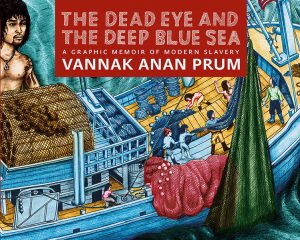
Schreibe einen Kommentar
Du musst angemeldet sein, um einen Kommentar abzugeben.